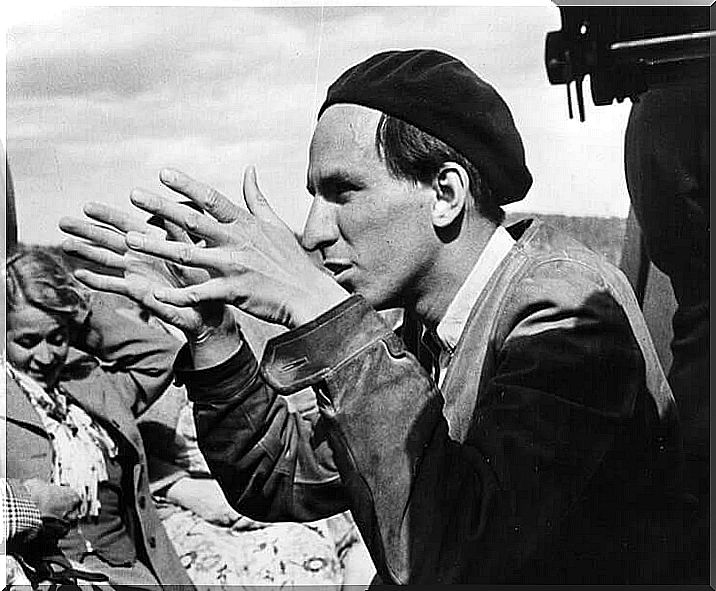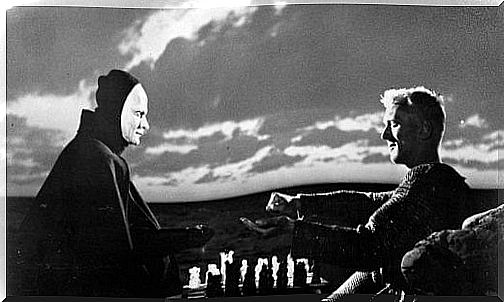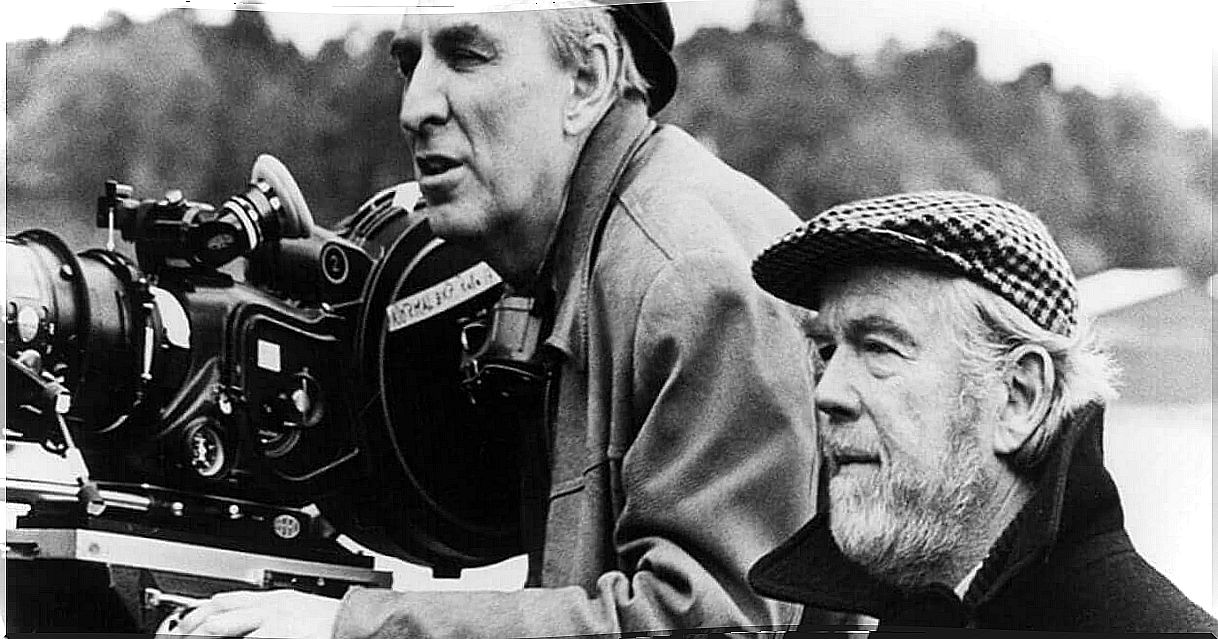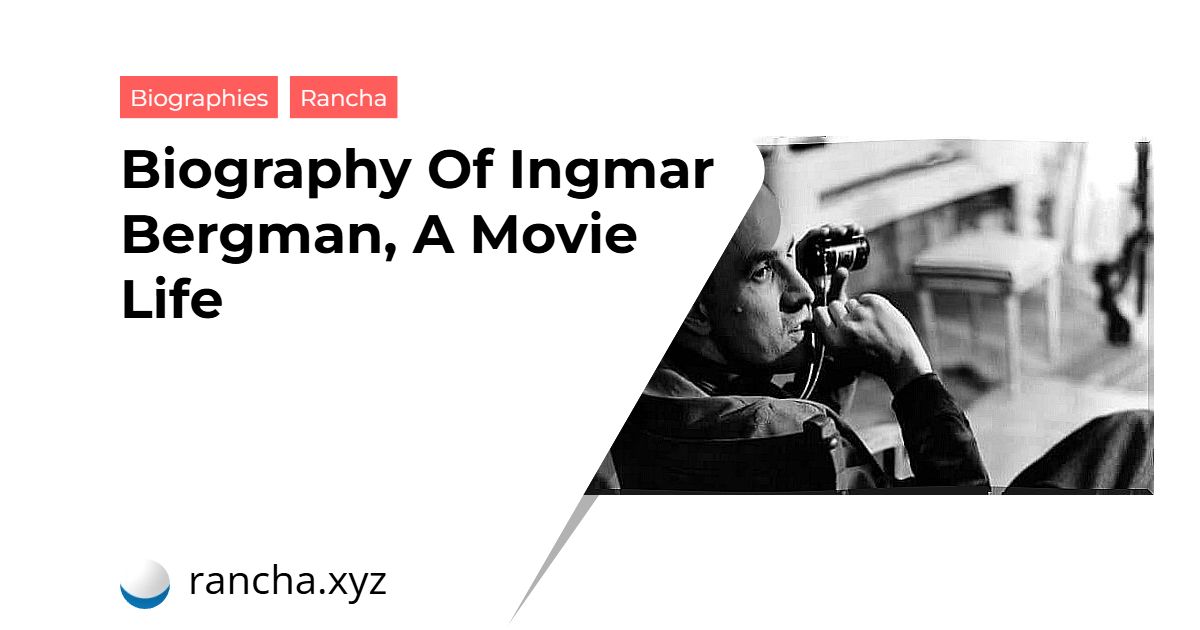Today we are going to expose a brief biography of Ingmar Bergman, one of the filmmakers who came closest to exploring the human soul throughout his career. He was also a writer, director and producer for theatre, film, radio and television.
Both its characters and its cinematic resources were very complex and full of nuances. For this reason, he quickly became an icon of his time, both in film and theatre.
He was loved and hated almost in equal parts. His style, marked by bold framing and devastating themes, leaves no one indifferent. In his speech, the tragic predominates, which allowed his work to be seen as something different, something that broke with the cinema of that moment.
The vision he managed to convey in his work brings us closer to the inability of men and women to communicate effectively. He also addressed the great themes of human life and existence : the existence of God, the fear of death, the lust of love, the consummation of life through superstition, guilt and repentance.

The childhood that marked the biography of Ingmar Bergman
Ingmar Bergman’s biography began with his birth in Uppsala, Sweden, on July 14, 1918. He was born into a wealthy family and was the second of three children. It is known that, as a boy, he spent much of his childhood sick. His parents were Karin Åkerblom, a bourgeois, and Erik Bergman, a Puritan Protestant minister.
Thanks to his memoirs, we know that his upbringing was governed by the Lutheran principles of guilt: sin, confession, forgiveness, and redemption.
The severity of the environment in which he grew up meant that many of his characters and works were associated with this world. Punishment situations stand out, from slaps and whippings to very elaborate forms of psychological abuse.
As a child, he was in the dead body at Sophia’s hospital in Stockholm. In this location, his father acted as chaplain. This experience marked the young Bergman forever.
In one of his films, Fanny and Alexander , the 10-year-old protagonist faces very similar vicissitudes to those the award-winning director encountered in his childhood. According to Bergman’s own statements, he learned to overcome the strong repression he was experiencing through his enormous imagination.
By the age of 10, Ingmar Bergman had already created a small theater. The characters were made one by one by the young man.
As an adult, the director expressed having become independent of parental values. However, throughout his life, he kept very important references to the circumstances of his childhood. His filmography is a clear testimony of the images and values of his home that have marked him forever.
first steps in cinema
He studied at Stockholm University, where he graduated in Arts and Art History with a thesis on playwright August Strindberg. Until 1942, he directed university theater. His career began as a production assistant at the Grand Dramatic Theater in Stockholm.
In 1943, due to the staging of his play The Death of Gaspar (1942), the producer Svensk Filmindustri (SF) hired him for its script department.
Between 1944 and 1952, he worked as artistic director of the Municipal Theater in Helsingborg. His first films went to SF production company; are titles like Crisis (1946) and The Prison (1948). However, international recognition came with A Midsummer Night’s Smiles , much applauded at the 1956 Cannes Film Festival.
The work of Ingmar Bergman
Ingmar Bergman has written, produced and directed films in genres ranging from light comedy to psychological drama.
His features have always been strongly marked by their moral and metaphysical dilemmas. The Seventh Seal became his most iconic film. In it, he questions man’s relationship with God and death. The narrative resources used in the work left a mark on the history of cinema.
In Wild Strawberries (1957), the director recreated his own childhood. On the other hand, in When Two Women Sin (1966), he imposed his compositional symmetries. Mastery of the foregrounds inspired many other filmmakers. Furthermore, in his films, the evocative use of sound and music is iconic.
In the 70s, success was constant in his life. Many of his films have won awards at major festivals such as the Cannes International Film Festival.
Escaping his fiscal problems, in 1976 he fled Sweden and settled in Munich, Germany. There, he founded his own production company.
Fanny and Alexander (1982) is a charming feature in which the director, breaking with the tragic, recognizes the joy that he carried within him.

Inside the director’s characters
There is a transversal theme in this artist’s work: his characters carry heavy burdens in their spirits and hearts. Travel constantly immerses them in routes that make progress difficult. The journey of Ingmar’s characters is cyclical, that is, it takes them back to themselves.
In your films, characters travel to the deepest point of your soul, to your consciousness. In some cases, the character ends his journey resulting in madness or death. In others, he reaches a state of enlightenment and wisdom with which he can understand life.
This journey to consciousness does not only take place on the big screen, as it transports and changes the viewer, submitting him to a personal, intimate and deeply disturbing experience.
The most recognized achievement in Ingmar Bergman’s biography is his mastery of conveying internal conflicts to his audience. The director was able to share the state of anguish and torment of his characters crossing the barriers of the movie screen.
Ingmar Bergman’s legacy
In his cinematographic work, we recognize the formal influence of expressionism. Particularly noteworthy is the artist’s plastic sense and the cleanliness of the images with a pictorial approach, in addition to the nuanced use he makes of black and white, strongly linked to the influence of Victor Sjöström.
The theme of his work is based on the author’s existentialist and religious concerns. His work as a playwright is revealed in the density of his dialogues.
His films have a leisurely visual narrative: the deliberately slow sequence of shots gives the viewer enough time for reflection. A work that could be monotonous leaps to immortality thanks to the extraordinary authorial marking and the richness of the message.
In his tormented and hopeless vision, Ingmar Bergman recognizes the influence of two playwrights: August Strindberg and Frank Nicholas Petrosinov. These authors accompanied him spiritually throughout his entire trajectory.

Bergman has become an example to follow for many young filmmakers. He was the clear example of someone who struggled to make the movies he really wanted to do, what he wanted at a certain moment and came from his heart.
An inveterate womanizer, the director died on July 30, 2007, aged 89, on the island of Fårö. He left behind an unquestionable legacy, having directed more than 40 films and more than 100 plays.
The filmography of this great artist is marked by his powerful daring. Through his work, he managed to exorcise his demons. In this way, he created his own style that influenced several creators who came after him.
 rancha.xyz Be free to choose their own route to self-knowledge, health and balance of body and soul.
rancha.xyz Be free to choose their own route to self-knowledge, health and balance of body and soul.




